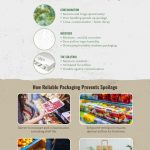Intermediate Bulk Containers (IBCs) are versatile storage and transportation solutions for a wide range of liquids and solids. Typically constructed from high-quality industrial-grade plastic, IBCs can come in both rigid and flexible forms. Their unique cube shape design allows for more efficient storage than cylindrical barrels, making them a popular choice for industrial applications. IBCs can hold up to 1000 liters of material and are also available in smaller sizes. An IBC reconditioning system can be used for easy cleaning and maintenance, making them an economical and reusable option for transport companies.
IBCs find extensive application in the transportation of a diverse range of materials, including raw materials, chemicals, food syrups, granulated food, wine, biological waste, pharmaceutical compounds, paints, rainwater, and petrochemical products. However, when reusing an IBC, it is of utmost importance to eliminate any remaining residue or traces of prior loads. Large haulage companies may possess their own on-site IBC reconditioning systems, whereas smaller businesses may rely on external reconditioning services to maintain the integrity of the containers.
IBCs are a relatively modern innovation, having only been patented in 1933 by Belgian inventor Olivier J.L. D’Hollander. Their superior features and benefits quickly rendered traditional barrels and cans obsolete. One of the primary advantages of IBCs is their dust-tight construction, which ensures that the contents remain free from contamination and leakage.
Benefits of using IBCs
Intermediate Bulk Containers(IBCs) offer several advantages over traditional cylindrical containers for the storage and transportation of materials. They are environmentally friendly, reduce waste, save time, and provide efficient storage solutions.
The cube shape of IBCs facilitates easy storage of large quantities due to their tessellating design and makes them easier to load onto forklift trucks and pallet stacks. This feature saves distribution companies significant time and effort, enhancing their operational efficiency. Moreover, IBCs are capable of holding large volumes of products, reducing the number of containers required and thereby minimizing waste. IBCs are available in various sizes, including the popular 275 Gallon IBC totes. As containers accumulate residue over time, IBC reconditioning systems allow for multiple reuses of these containers.
IBC Reconditioning Systems
IBC reconditioning systems are designed to clean and dry IBCs thoroughly, enabling them to be safely and effectively reused. Challenge offers two automated systems for IBC cleaning. The first system cleans and rinses the IBC, while the other one dries it. Using Reconditioned IBC Totes is an affordable and environmentally friendly option.
Automatic Drying System
Challenger’s automatic IBC drying system has been specially designed to transfer IBCs between different process stations and dry them thoroughly. The system can be loaded at one end, and then pneumatics are used to move the IBCs into place. After the system is firmly in place, the drying process is initiated by the operator using a control panel that allows for processing time adjustments. The system uses a galvanized steel manifold to direct hot air into the air nozzles to dry the IBCs. The hot air supply is organized by the client, unless they request additional services when placing their order. Optional features include walkways, operator platforms, tilt stations, hoists, and infeed and outfeed conveyors.
Automatic Washing System
Challenger’s automatic IBC washing system is designed to clean and drain both the exterior and interior of used IBCs so they can be reused. The system uses a walking beam conveyor to ensure that the IBCs are in the correct position before the washing process begins. The system is modular and can be expanded to include additional features in the future. The washing process involves four hot steam water jets to ensure that all areas of the tank are thoroughly cleaned. The system is divided into two parts: first, the IBC is drained, and then the washing process begins. Once the washing process is complete, the IBC is ready to be dried.




